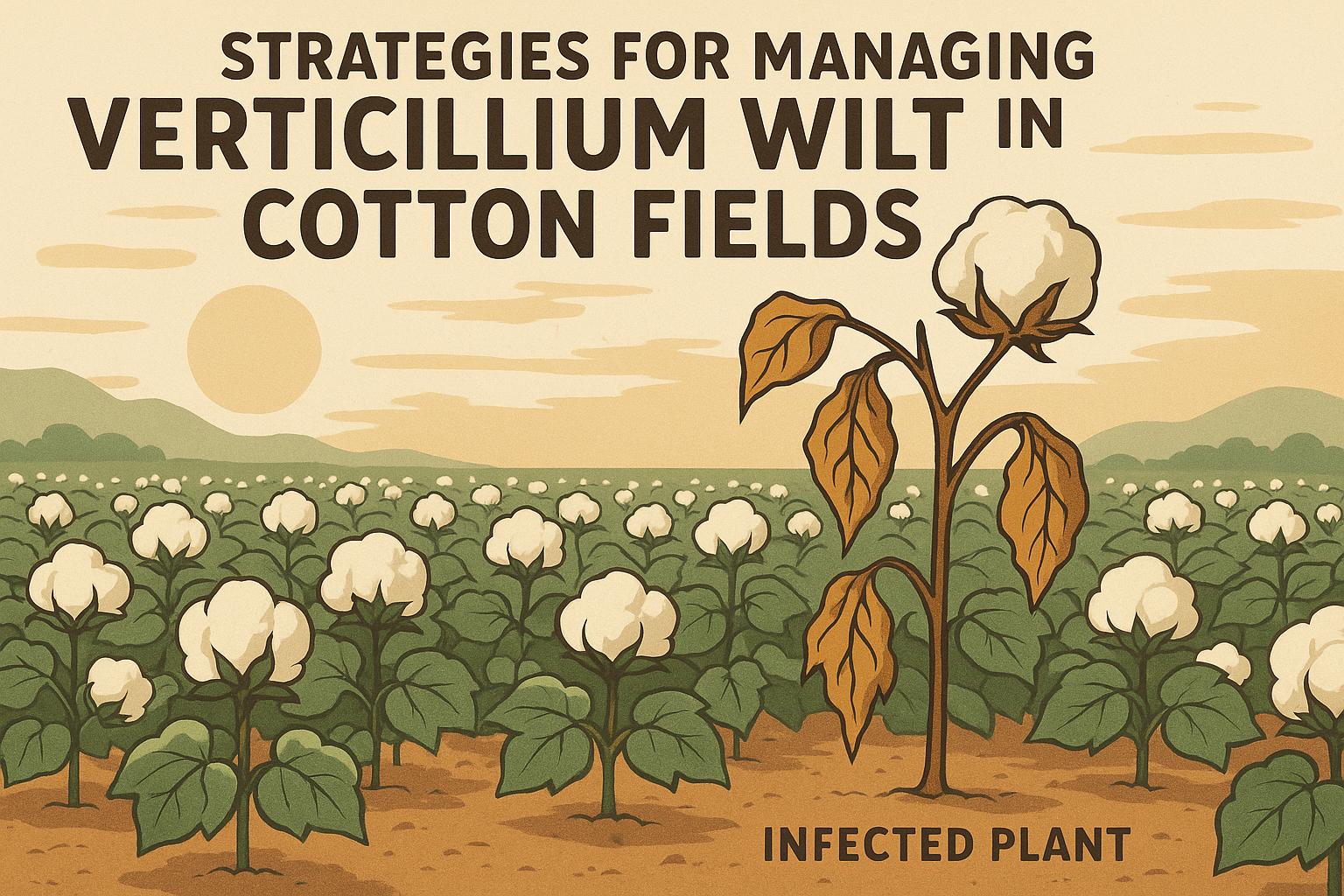Water is a precious resource in cotton production, where efficient irrigation can make or break yields, fiber quality, and farm profitability. For seasoned cotton farmers navigating variable climates and soil types, mastering irrigation isn't just about applying water—it's about timing, method, and technology to maximize uptake while minimizing waste. Over-irrigation leads to nutrient leaching, root diseases, and higher costs, while under-irrigation stresses plants, reducing boll set and lint quality. This in-depth guide explores proven strategies to optimize water use, from soil moisture monitoring to advanced systems, helping you achieve consistent outputs of 1,200-1,800 pounds per acre or more in well-managed fields. By integrating these approaches, growers can enhance drought resilience, cut pumping expenses, and support sustainable practices that preserve aquifers and soil health across regions like the arid Southwest or humid Southeast.
Understanding Water Requirements in Cotton Growth Stages
Cotton has distinct water needs throughout its lifecycle, influenced by factors like evapotranspiration (ET), soil texture, and weather patterns. Seedlings require moderate moisture for establishment—about 0.5-1 inch per week—to promote deep roots without saturating the soil, which can invite damping-off diseases. During vegetative growth, demands rise to 1-1.5 inches weekly as canopy develops, supporting leaf expansion and node formation. Peak usage occurs at squaring and boll fill, often 1.5-2.5 inches per week, when 70-80% of total water is consumed to fuel reproductive development. Late-season tapering prevents excessive vegetative growth and aids maturity.
Total seasonal requirements vary: 20-30 inches in rainfed systems supplemented by irrigation, up to 40 inches in dry areas. Sandy soils demand more frequent, lighter applications due to low retention, while clays hold water longer but risk compaction. Calculate needs using crop coefficients (Kc) multiplied by reference ET from local weather stations—Kc starts at 0.4 for emergence, peaks at 1.2 during bloom, and drops to 0.6 post-cutout. Overlooking these stages can slash yields by 20-50%, emphasizing the need for stage-specific planning.
Soil Moisture Monitoring: Tools and Techniques for Precision
Accurate monitoring is the foundation of efficient irrigation, preventing guesswork and over-application. Use tensiometers or soil probes to measure matric potential at 6-12 inch depths, aiming for -30 to -50 centibars during peak growth to avoid stress. Capacitance sensors provide real-time data across profiles, integrating with apps for alerts when levels drop below 50% available water capacity.
Gypsum blocks or neutron probes offer alternatives for deeper insights, especially in variable fields. Install at least three stations per 40 acres, positioned in representative zones. Combine with plant-based indicators like canopy temperature via infrared thermometers—stress shows as elevated readings—or visual cues such as wilting leaves. For tech-savvy operations, drones with multispectral imaging map moisture variability, enabling zone-specific scheduling that can save 10-20% water. Regular calibration ensures reliability, turning data into actionable insights for deficit irrigation, where mild stress during non-critical stages boosts water use efficiency (WUE) to 0.25-0.35 pounds of lint per inch.
Choosing the Right Irrigation System for Your Operation
System selection hinges on field size, topography, water source, and budget. Furrow irrigation, common in level fields, delivers water via channels but loses 20-40% to evaporation and runoff; improve efficiency with surge valves for alternating flows, reducing advance time by 30%. Pivot systems suit larger, circular fields, applying uniform water with low-pressure drops for 85-95% efficiency; add LEPA (Low Energy Precision Application) bubblers to minimize foliar wetting and cut losses further.
Drip irrigation excels in water-scarce or uneven terrains, delivering 90-95% efficiency by targeting roots directly, reducing weed pressure and disease. Subsurface drip buries lines 8-12 inches deep for perennial setups, conserving even more by avoiding surface evaporation. Initial costs range from $500-1,200 per acre, but payback comes through 15-30% yield gains and lower energy use. For small plots, portable sprinklers offer flexibility, though wind drift can waste 10-20%. Evaluate based on uniformity coefficient (CU > 85%) and match to crop row spacing for optimal coverage.
Scheduling Irrigation: Balancing Crop Needs and Environmental Factors
Effective scheduling synchronizes applications with crop demand and soil status. Use the checkbook method: Track daily ET minus rainfall, irrigating when cumulative deficit reaches 1-2 inches. Automated systems with weather integration refine this, adjusting for humidity, wind, and temperature. In deficit strategies, withhold 20-30% water post-peak bloom to hasten maturity without yield loss, ideal for limited supplies.
Factor in rainfall: Probe after events to assess infiltration, avoiding applications if soil is at field capacity. In saline areas, leach salts with extra 10-15% water during off-peak, maintaining EC below 4 dS/m. Tailor to varieties—upland cotton tolerates drier conditions than Pima, which needs consistent moisture for longer staples. Software like Irrigation Scheduler models scenarios, potentially boosting WUE by 20%.
Integrating Cultural Practices to Enhance Water Efficiency
Cultural tactics amplify irrigation efforts by improving soil's water-holding capacity. Cover crops like rye or legumes add organic matter, increasing retention by 0.5-1 inch per foot of soil. Reduced tillage preserves structure, reducing runoff and enhancing infiltration rates to 0.5-1 inch per hour. Mulching with residues suppresses evaporation, conserving 2-4 inches seasonally.
Crop rotation with deep-rooted species alleviates compaction, allowing better water penetration. Plant density adjustments—narrower rows for quicker canopy closure—shade soil, cutting losses by 10-15%. Nutrient management ties in: Balanced K promotes stomatal regulation for efficient transpiration. These practices create a synergistic system, where irrigation complements natural processes for sustainable gains.
Advanced Technologies for Precision Irrigation
Embrace innovation to elevate efficiency. Variable rate irrigation (VRI) on pivots adjusts flows via GPS, matching field variability and saving 15-25% water. Soil moisture networks with IoT sensors feed data to cloud platforms for predictive analytics, forecasting needs 3-5 days ahead. AI-driven models incorporate satellite imagery for ET estimates, optimizing schedules across hundreds of acres.
Remote valves and pumps enable on-demand control via apps, reducing labor. In water-limited regions, adopt regulated deficit irrigation (RDI), applying 70-80% ET during vegetative stages to save 20% without yield penalties. These tools, with ROIs in 2-4 years, empower data-driven decisions for resilient operations.
Overcoming Common Irrigation Challenges
Challenges like clogging in drip lines require regular flushing and acid injections. Uneven application from wind or slopes? Opt for low-drift nozzles or terracing. Regulatory constraints on water allocation demand auditing usage, targeting <25 inches per bale WUE. Collaborate with extension services for audits and incentives.
| Strategy | Benefits | Implementation Tips |
|---|---|---|
| Soil Monitoring | Prevents over/under-watering | Use probes at multiple depths; calibrate seasonally |
| Drip Systems | High efficiency (90-95%) | Bury lines for subsurface; fertigate nutrients |
| Deficit Scheduling | Saves 20-30% water | Apply during non-critical stages; monitor stress |
| Cover Crops | Boosts retention | Plant winter rye; terminate pre-planting |
| VRI Technology | Zone-specific application | Integrate GPS; map variability annually |
| Cultural Integration | Enhances soil health | Reduce tillage; rotate crops for structure |
These address hurdles for consistent performance.
Sustainability and Economic Impacts of Efficient Irrigation
Sustainable irrigation conserves resources, reducing aquifer depletion and runoff pollution. Practices like recycling tailwater capture 10-20% for reuse. Economically, efficiency cuts energy costs by 15-30% and boosts yields, with premiums for water-smart cotton. Long-term, it builds resilience against droughts, ensuring viability.
In conclusion, efficient irrigation transforms water from a limiter to an asset in cotton farming. Implement these strategies for optimized yields and sustainability. Explore our state cotton histories for more insights. What's your irrigation approach?


